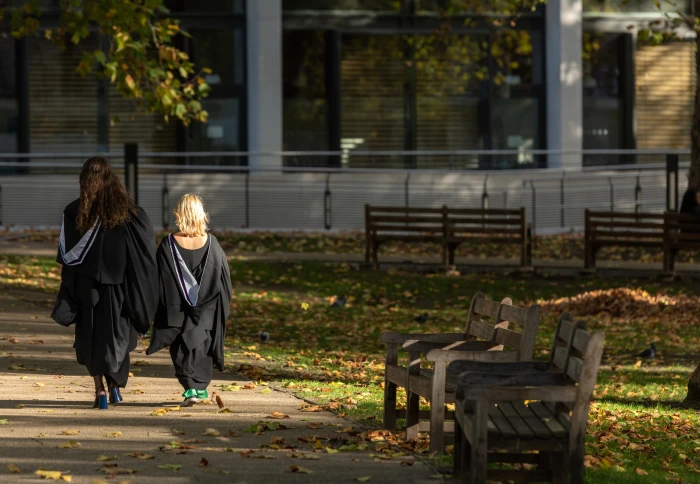Ethnicity and school attended impact medical students’ grades


The gap in academic achievement between White and minority ethnic medical students in the UK varies considerably.
These are among the key findings of a new analysis, which shows that the awarding gap is affected by an individual’s ethnic background and which medical school they attended.
The study, led by researchers at Imperial College London and the University of Warwick and published today in the BMJ, is the largest of its kind to date. Its authors say the findings should prompt a call for urgent remedial action to close the gap and address the career-long disadvantage faced by future minority ethnic doctors in the UK.
Professor Amir Sam, Head of Imperial College School of Medicine, and co-author of the study, said: “We have long known that there are a number of factors which can influence academic performance. But our research highlights the direct impact on medical students from minority ethnic backgrounds. If we fail to address this situation urgently and close this gap, we risk future generations of doctors from minority ethnic backgrounds starting their lifelong careers already at a disadvantage compared to their white peers."
Despite a growing body of research on differences in outcomes within UK medical education, no large studies drawing on national data and universally applicable outcome measures have been carried out. This, say researchers, hampers a deeper understanding of this complex problem and how best to address it.
Professor Sam added, "While the term 'attainment gap' is widely used, we are also encouraging use of the term 'awarding gap', as in this study. This recognises that the onus is not just on the student and that universities must acknowledge their role."
In the latest analysis, the researchers reviewed the academic performance of 16,020 students (out of an initial 20,525) on entry to (2012-14) and exit from 33 medical schools across the UK 4 to 6 years later, depending on their course type.
Reviewing academic performance
Most UK medical schools require prospective students to sit admissions aptitude tests. The study used the most widely used test, the UCAT (University Clinical Aptitude Test) for the input measures.
The UK Foundation Programme (UKFP) is the first stage of postgraduate clinical training in the UK and is compulsory for those wishing to work as doctors in the UK. UKFP application scores (range 34-100) were therefore chosen as the output measure.
Ethnicity groupings were compiled from UCAT definitions. From the pool of 16,020 students, in descending size order these were: White (69%), Indian (10.2%), Pakistani (4.8%), mixed (4.2%), other Asian background (3.9%), Black (2.9%), other ethnic background (2.2%), Chinese (1.6%) and Bangladeshi (1.1%).
The average proportion of Black, Asian and minority ethnic students was 29% across the UK, ranging from 9.1% (30) at Dundee to 60% (400) at Imperial College London. These students were significantly more likely to be male, to come from more deprived backgrounds, and to be on standard entry courses.
When grouped together as one, Black, Asian and minority ethnic students achieved significantly lower UKFP scores than their White peers at the end of their medical school education – a difference of around 2 out of 100 UKFP points.
When assessed separately, these scores varied considerably among different ethnicities. Mixed ethnicity and Indian students had relatively high scores, for example, while Chinese and Pakistani students had relatively low scores, after controlling for aptitude on entry and other demographics. After these controls, the academic performance gap was statistically significant at 22 out of 33 medical schools, with minority ethnic students achieving consistently lower UKFP scores than White students, irrespective of the numbers of minority ethnic students attending them.
Again, the size of this gap varied considerably among these schools, suggesting that some Black, Asian and minority ethnic students may be further disadvantaged by the educational environment of their medical school.
Recognising limitations
This is an observational study, and the team acknowledged various limitations to their findings, including the strict eligibility criteria which excluded more than 4000 students (22%) from the initial dataset.
In addition, there is difficulty defining the meaning of ‘mixed ethnicity,’ and there may be important differences in attainment between students of mixed White and Asian ethnicity and those of mixed White and Black ethnicity, for example.
Notwithstanding these limitations, the findings show a clear gap in academic performance between White and Black, Asian and minority ethnic medical students.
The team behind the study suggest variable curricula, teaching methods and assessment, and institutional factors, such as attitudes and faculty diversity, may explain some, but not all, of the differences in outcomes among medical schools.
The authors write: “Our findings suggest that the current teaching and assessment systems are disadvantageous to Black, Asian and minority ethnic students, and further work is needed to explore exactly what these differences are, why they occur, and how they impact individual student groups.
“Medical schools must, therefore, take action to identify and mitigate the reasons for any attainment gap in their schools if we are to achieve an equal learning environment for our future doctors.”
'Is the awarding gap at UK medical schools influenced by ethnicity and medical school attended? A retrospective cohort study' by Brown C, Goss C, Sam AH. is published in BMJ Open. DOI: https://doi.org/10.1136/bmjopen-2023-075945
This article is based on materials from the BMJ.
Article text (excluding photos or graphics) © Imperial College London.
Photos and graphics subject to third party copyright used with permission or © Imperial College London.